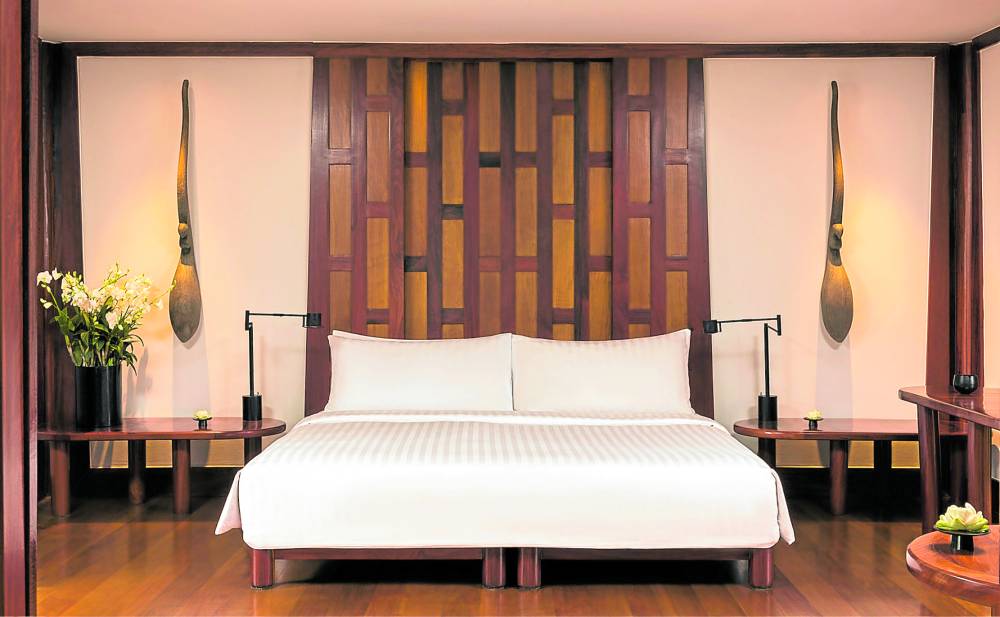Moms as custodians of cultural harmony in our homes

These modern stairs are intended to maintain good lighting distribution around the house for positive energy flow. | PHOTO: fulgararchitects.com
The challenge of designing a home for families blending Chinese and Filipino cultures is not just an opportunity but also a responsibility.
By carefully considering each culture’s aesthetic and practical needs, a home can create spaces that respect and reflect these backgrounds, while celebrating and harmonizing their rich heritages.
Cultural sensitivities in design
Chinese culture emphasizes feng shui, which includes avoiding mirrors opposite beds to prevent sleep disorders, and ensuring no heavy objects are placed above sleeping areas. Conversely, Filipino homes often favor vibrant colors, indigenous materials, and an open layout, promoting a welcoming and warm setting.
Beliefs and harmony
Article continues after this advertisement
Blending two traditions into one landscape, this koi pond with the Virgin Mary icon proves that integrating diverse elements from Chinese and Filipino beliefs is possible. | PHOTO: fulgararchitects.com
Chinese principles dictate the strategic placement of doors, windows, and stairs to enhance the flow of positive “qi” (energy) and incorporate symbolic elements like the yin-yang and celestial animals for energy balance. The orientation and room placement follow the Bagua and Jiugongtu principles, carefully avoiding inauspicious numbers such as four.
Article continues after this advertisement
Filipino beliefs dictate that stairs should not have steps divisible by three to prevent the sequence “oro, plata, mata” (gold, silver, death). | PHOTO: vsszan.com
Meanwhile, Filipino beliefs dictate that stairs should not have steps divisible by three to prevent the sequence “oro, plata, mata” (gold, silver, death), positioning the main door to face east for prosperity, and ensuring that bedrooms are not located in basements or under stairs.
Religious symbols, such as saints, are typically the first items brought into a new Filipino home, and practices like burying coins or chicken blood in the foundation are thought to bring good luck and protection.

A bedroom that incorporates one of the fengshui principles, promoting a sense of balance and harmony | PHOTO: aman.com
Religious and spiritual spaces
Creating a dedicated space for worship and spiritual reflection that respects both Chinese religious artifacts and Filipino Catholic icons can help cater to all family members’ spiritual needs. This space should allow for practices like ancestor veneration and the display of religious icons like the Santo Niño.
From cradle to caring
In many households, mothers are crucial in maintaining the balance and harmony of the home’s cultural dynamics. Designing the home to simplify maintenance and to provide spaces that facilitate her role as the caretaker and culture keeper can help celebrate her central role.
Decor and festivities

A great example of fusion of cultures, pansit was introduced to the Philippines by Chinese immigrants centuries ago, and was then integrated into Filipino cuisine. | PHOTO: marionskitchen.com
The mother’s influence extends to decorating and observing Chinese and Filipino festivities. For example, integrating oriental symbols like koi fish or bamboo in home decor alongside Filipino elements like woven textiles and wood carvings can create a visually harmonious environment. During festivals, a mother might encourage the display of red lanterns for Chinese New Year and simultaneously prepare to observe traditional Filipino holidays such as Christmas or Easter, ensuring that decorations reflect both heritages.
Integration through daily routines
Meal preparation is a significant aspect where integration is evident. By fusing both Chinese and Filipino dishes in daily meals, a mother can provide her family with a taste of both cultures. The family’s diverse palates become a teaching moment on the history and significance of each dish. The kitchen becomes a zone of cultural exchange where ingredients and techniques from both cuisines blend.
Empowering the mother’s role
Mothers often act as mediators in cultural conflicts. Whether it’s disagreements over traditions, daily habits, or even decor choices, moms work to find compromises that honor both cultures. Encouraging open communication, participating in traditional practices, and sharing responsibilities can help alleviate the burden and make cultural integration a shared family journey.
The author (at www.ianfulgar.com) is a leading architect with an impressive portfolio of local and international clients. His team elevates hotels and resorts, condominiums, residences, and commercial and mixed-use township development projects with innovative, cutting-edge design and business solutions that have garnered industry recognition, making him the go-to expert for clients seeking to transform their real estate ventures.